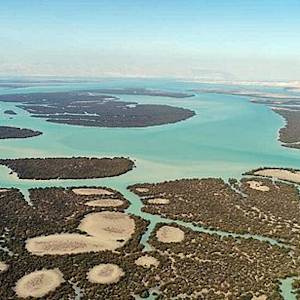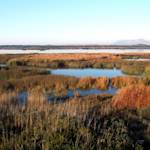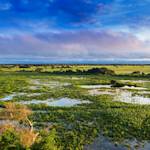Palo Verde Wetland
1977 CE • Costa Rica
"Palo Verde is one of the last three remnants of tropical dry forests in Mesoamerica. The more than 19,000 hectares that makeup it enclose more than 13 different habitats, including mangroves, evergreen and deciduous forests, grasslands and fresh and saltwater swamps, limestone rock forest, and secondary forest. Its trails allow visitors to explore and ascend limestone formations that were once at the bottom of the sea and today are home to dozens of species of bats, mammals such as wild pigs, and typical trees of the dry tropical forest that have managed to grow and survive among the cracks in the rocks." Palo Verde is known for its large concentration of aquatic birds and as a major stopping place for over 60 species of migratory birds. Prior to the 1970s, the region was originally used for cattle ranching, with over 10,000 livestock grazing the area. In 1977, Palo Verde was named a wildlife refuge by the Costa Rican government, and since 1991 has been protected by the Ramsar Convention.
Mónica Quesada Cordero, "Palo Verde, refuge of the dry tropical forest," El Colectivo 506, December 21, 2020.
Image: Vilseskogen via Flickr, Attribution-NonCommercial 2.0 Generic (CC BY-NC 2.0)


Learn about Maya Lin’s fifth and final memorial: a multi-platform science based artwork that presents an ecological history of our world - past, present, and future.

Discover ecological histories and stories of former abundance, loss, and recovery on the map of memory.

Learn how we can reduce our emissions and protect and restore species and habitats – around the world.

See how art can help us rethink the problems we face, and give us hope that each one of us can make a difference.

Help make a global memorial something personal and close to home. Share your stories of the natural world.


